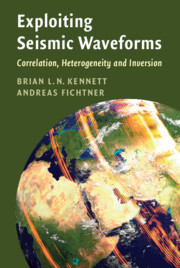Book contents
- Frontmatter
- Dedication
- Contents
- Preface
- 1 Introduction
- Part I Building the Seismic Wavefield
- Part II Correlation Wavefields
- 5 Correlations and Transfer Functions
- 6 Correlations and Interferometry
- 7 Correlations and Ambient Noise
- 8 Coda Correlations
- 9 Correlations in Receiver Studies
- Part III Interaction of Seismic Waves with Heterogeneity
- Part IV Inversion for Earth Structure
- Appendix Table of Notation
- Bibliography
- Index
6 - Correlations and Interferometry
from Part II - Correlation Wavefields
Published online by Cambridge University Press: 16 November 2020
- Frontmatter
- Dedication
- Contents
- Preface
- 1 Introduction
- Part I Building the Seismic Wavefield
- Part II Correlation Wavefields
- 5 Correlations and Transfer Functions
- 6 Correlations and Interferometry
- 7 Correlations and Ambient Noise
- 8 Coda Correlations
- 9 Correlations in Receiver Studies
- Part III Interaction of Seismic Waves with Heterogeneity
- Part IV Inversion for Earth Structure
- Appendix Table of Notation
- Bibliography
- Index
Summary
We address the nature of the correlation wavefield and its relation to the group of techniques collectively known as seismic interferometry.We establish a direct representation of the cross-correlation of the seismic signals between two stations and show how, with a suitable distribution of sources, this correlation can provide a virtual source-receiver pair whose phase properties arise from differencing.We then discuss the concept of generalised interferometry with an arbitrary distribution of sources, and illustrate the way in which processing procedures can affect the nature of correlated signals
- Type
- Chapter
- Information
- Exploiting Seismic WaveformsCorrelation, Heterogeneity and Inversion, pp. 129 - 156Publisher: Cambridge University PressPrint publication year: 2020

